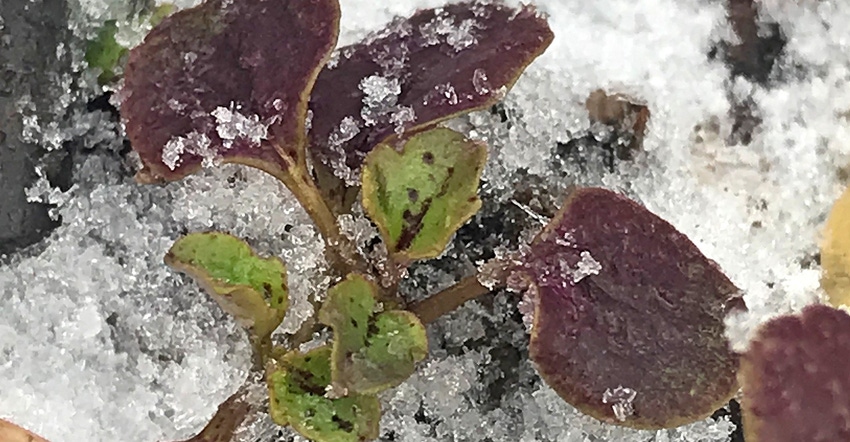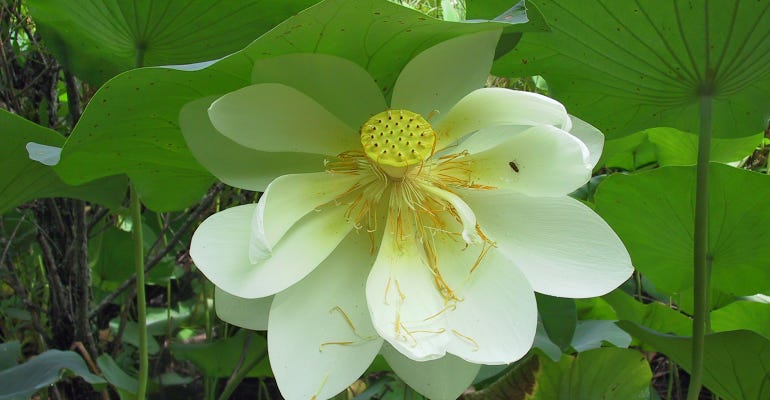February 20, 2020

About 17 years ago, I planted a white wild indigo. It grew for several years, bloomed and then disappeared. I thought it died. Then, seven years ago, it shot up and bloomed in the exact same location.
The plant in the garden had been alive, but dormant in the ground. It since has disappeared again. Some native orchids and groundnuts are known to go dormant for multiple years.
Most native seeds have a dormancy mechanism, preventing them from sprouting before winter. After all, if seeds sprouted at the onset of winter, they likely would freeze to death. But there are a few, such as the blue-eyed Mary, that don’t.
These are called a winter annual and germinate in November. It slowly grows all winter, and then blooms in April. Its purple-spotted green leaves have a sugary substance that prevents them from freezing — nature's antifreeze. Indian paintbrush and Miami mist also are winter annuals.
Native plants often are not traditional in their growing process. Here are a few of them and a few odd facts about them:
Glade coneflower. Every year in late summer, I notice the seed heads of glade coneflower disappear — there one day, gone the next. Taking a closer look, I noticed the seed heads laying on the ground below the flower stalk and shredded to pieces.
Mice possibly were climbing the stems and cutting off the heads. It was then that I remembered years before seeing mouse tracks in the snow leading between seed stalks of a Missouri black-eyed Susan on the very same glade.
Laying scattered on the snow below the stalks were the obvious “crumbs” left from a seed head that had been removed and chewed apart. Mice were climbing the stems to get to the seed heads above for food.
Wafer ash and prickly ash. There are two plants in the citrus family that grow wild in Missouri, wafer ash and prickly ash. Neither are true ashes, but both are the larval food source for giant swallowtail butterfly — the largest butterfly in the state.
The peculiar thing is that in Missouri, they lay their eggs only on these two types of plants, and their caterpillars look like fresh bird droppings, which must be nature’s best camouflage. Tiger swallowtail, viceroy and red-spotted purple butterflies also have caterpillars that resemble bird droppings.

FUN FOR KIDS: Grab your children or grandchildren and a few American lotus seeds. Put the seeds in a pot and watch them grow. They pop out of the soil quick in only three days. Here is the plant growing in the wild.

American lotus. If every child grew American lotus from seed, there probably would not be any nurses, carpenters or computer workers. The world would be full of gardeners instead. Nor would there be Chia Pets; we would have Lotus Pets instead. That’s how fun it is.
In April, take a few lotus seeds, snip the ends off with a pair of sturdy scissors and throw them in a jar of water. Step back and see what happens. In three days, they sprout. In six days, they grow a long tail (a leaf stem), and at 10 days, they grow a white beard (roots). Voila, green-bearded snakes!
Replace the water every three days. Plant them in a large tub or half-whiskey barrel (that holds water) with soil at the bottom and a layer of pea gravel on top. Then watch them grow fast into flowering plants that flower and fruit in the same season.
Take time this year to plant a few native plants, step back and watch for their peculiarities.
Woodbury is the horticulturalist and curator of the Whitmore Wildflower Garden at Shaw Nature Reserve in Gray Summit, Mo., where he works with native plant propagation, design and the Grow Native! program.
About the Author(s)
You May Also Like




